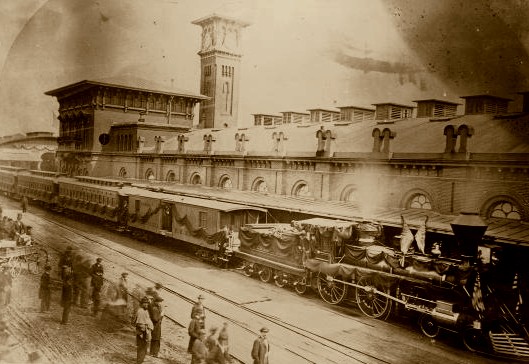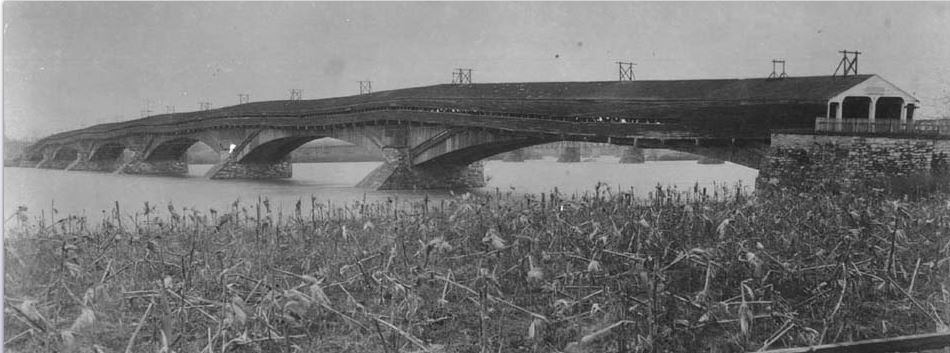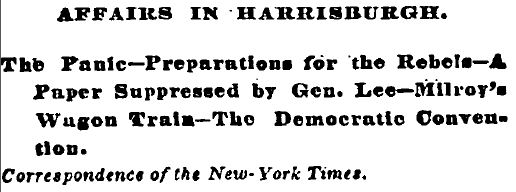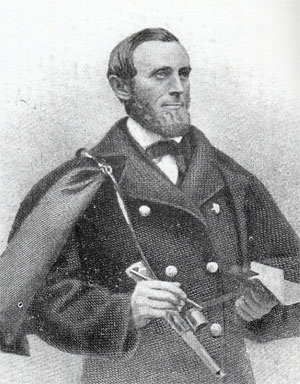“The Panic:” Unprecedented Chaos in Harrisburg
Posted By Jake Wynn on June 18, 2013
As yesterday’s post illustrated, the state government felt it necessary to begin evacuating the archives found within the state library in the midst of the crisis. Today, we will examine the situation in Harrisburg from a different perspective…
Today’s post will allow the people who were in the city on June 16, 1863 to tell the story.
“The morning broke upon a populace all astir; who had been called out of bed by the “beat of the alarming drum,” the blast of the bugle and the clanging of bells. The streets were lively with men who were either returning from a night’s work on the fortifications, or going over to relieve those who were either returning from a night’s work on the fortifications, or were going over to relieve those who were toiling there.
“As the sun rose higher, the excitement gathered head. All along the streets were omnibuses, wagons and wheelbarrows, taking in trunks and valuables and rushing them down to the depot, to be shipped out of rebel range. The stores, the female seminaries, and almost every private residence, were busy all forenoon in swelling the mountain of freight that lay at the depot. Every horse was impressed into the service, and every porter groaned beneath his weight of responsibilities…”
– Harrisburg Patriot & Union
“About ten o’clock this morning, the horse belonging to Dr. Harris, of Third Street, became frightened at something unusual, and dashed down the street throwing both the Dr. and his driver, a little negro boy, out of the carriage. Relieved of its driver, the horse now had full sway and increased his speed down the street. As he neared Market, the carriage collided with another coming from another direction, spilling its occupants and breaking the carriage in a dozen different places…”
“… The persons thrown out of the carriage sustained but little injury.”
– Harrisburg Telegraph

The Pennsylvania Railroad Depot at Harrisburg in 1865
“The railroad stations were crowded with an excited people,—men, women, and children,—with trunks, boxes, bundles; packages tied up in bed-blankets and quilts; mountains of baggage,—tumbling it into the cars, rushing here and there in a frantic manner; shouting, screaming, as if the Rebels were about to dash into the town and lay it in ashes. The railroad authorities were removing their cars and engines. The merchants were packing up their goods; housewives were secreting their silver; everywhere there was a hurly-burly…”
– Charles C. Coffin, Boston Journal
” The scene at noon at the depots was indescribable… A sweltering mass of humanity thronged the platform, all furious to escape from the doomed city.”
“At the bridge and across the river the scene was equally excited. All through the day a steady steam of people, on foot and in wagons, young and old, black and white, was pouring across it from the Cumberland Valley, bearing with them their household goods and all manner of goods and stock…”

The Old “Camelback” Bridge (Market Street Bridge today) was the main road over the Susquehanna River at Harrisburg.
“… Endless trains, laden with flour, grain and merchandise, hourly emerged from the valley and thundered across the bridge and through the city. Wagons loaded with tons of trunks and boxes, defiled in continuous procession down the pike and across the river, raising a dust cloud that marked the outline of the road as far as the eye could see.”
– Harrisburg Patriot & Union
“Citizens in straw hats and linen coats are parading the streets with muskets, and learning the manual of arms. Hundreds of officers are rushing to and fro, and to my great grief, are occupying all the rooms at the hotels.
“The railroad trains, both arriving and departing, are loaded down, and the whole town is in such a state of excitement that even Pennsylvania Dutch phlegm cannot resist the contagion.
“What will become of Harrrisburgh when it relapses into its usual stupor the oldest inhabitant cannot imagine.”
– Harrisburg correspondent, The New York Times
Harrisburg became the focal point of the Union during these stressful few days. Many realized that the war could be won or lost in the hills and valleys of Central Pennsylvania. This struggle in Pennsylvania would prove to be the among the most crucial moments during the Civil War.
The photograph of the Camelback Bridge comes from the Pennsylvania State Archives.
The photograph and quote from Charles Coffin comes from his book, Four Years of Fighting.
Stay tuned for more posts as Central Pennsylvania commemorates the 150th anniversary of the Invasion of Pennsylvania and the battle of Gettysburg.
 ;
;




Comments